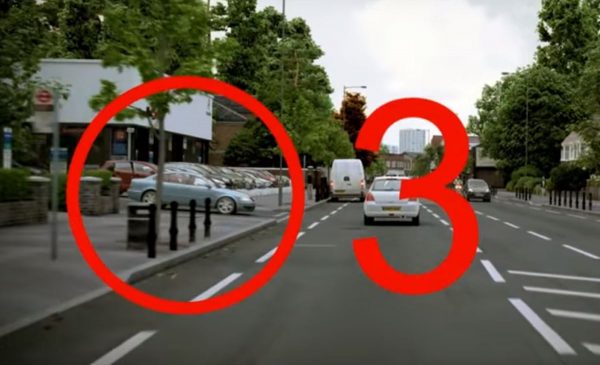The hazard perception test consists of fourteen one-minute videos that contain developing hazards from the driver’s point of view. You have to take it if you are doing a car, motorbike or scooter test. The hazards are the types of things you’ll find in everyday driving such as:
- a pedestrian walking out in front of you
- a vehicle indicating to pull out in front of you
- meeting an oncoming vehicle in a narrow road
- animals wandering onto the road
- vehicles reversing out of driveways in front of you.
You sit in front of a video screen and all you need to do is click on the hazard when it appears. The system measures what you clicked on and how long you took to react. The earlier you click on the hazard, the more points you get, up to a maximum of five.

You have to do the HPT immediately after the theory test. First, you’ll be shown a short video of how it works. You can replay this tutorial, and once you’re happy you can commence the actual tests. You’ll get a countdown before each video starts.
When you click on the screen a red flag will appear at the bottom to say that your click has been registered. A hazard is something that will cause you to take action such as braking or changing direction. You’ll know if you got the right one because the driver will have to take some kind of evasive action like swerving, stopping or slowing down. If you don’t click before the hazard actually occurs, then you won’t get any points.
At the end of the clip the screen goes black for a few seconds, then the next video will start with the countdown.
If you don’t pass the Hazard Perception Test, you will get an overall fail in the theory test, so make sure you are well-prepared for both the theory and hazard perception tests before you turn up.
What not to do
Clicking too much will reduce your score, although you have to click a lot, or click in a pattern for this to happen. You should only be identifying unfolding hazards. For example, a pedestrian standing by the side of the road isn’t an unfolding hazard, but a pedestrian jogging towards the kerb with headphones on and not looking in your direction could be an unfolding hazard.
The following video explains it.
The test takes around 20 minutes and there is no opportunity for you to repeat videos. You must score at least 44 out of 75 maximum.
The facts:
Test time: 20 minutes
Number of points required: 44 out of 75
Number of videos: 14 (13 have one hazard and one has two hazards)
